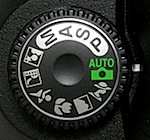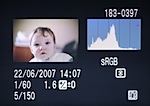46 Ways To Start A Business With No Money
IN: BUSINESS IDEAS|EDUCATION|HOW TO BY: BRIAN ARMSTRONG
16May2008Most people who want to start their own business don't have a ton of money laying around and it's probably one the most common questions I get emailed about: How can I get started without a lot of cash?
Well I've put together a list below of the best ideas I've heard and personally used. I hope you find it useful!
The three basic strategies to starting a business without much money are:
- Delay the normal "business starting" activities like incorporating, hiring, renting office or retail space, etc until AFTER your business has started earning money. This is known as bootstrapping.
- Doing everything yourself and spending your personal time instead of hiring an expert. (Takes longer but costs less.)
- Using some neat tricks and little known deals below.
Start With The Easy Stuff: Eliminate Expenses
1. Don't rent an office! – work from home. Or better yet work from the best free office with locations everywhere: Starbucks. If you need to meet with a client and are worried about seeming small time without an office, don't be. Just meet them at a restaurant for a lunch meeting. This is what people with the nicest offices do anyway.
2. Don't hire any employees! – do it all yourself until you have some $ coming in the door.
3. Don't hire lawyers, technical people, graphic designers, or assistants (see below)
Legal Stuff and Incorporating
4. Get a free lawyer and legal advice from the mentors at Score.org
5. Find a website with a similar legal document and modify it to your needs
6. An LLC is probably the best business structure, but don't worry about incorporating until you're earning money, just do a sole proprietorship, you can always incorporate later (you can get it setup with the IRS in just a few minutes by calling them at 800-829-4933)
7. Learn how to do your own financial statements for your business in Excel instead of hiring a CPA or bookkeeper (again you can do this after you're making money)
8. Take a Quickbooks class at your local community college
Make a website for your business
9. Don't pay a premium for a top end domain name, there are plenty of good ones left
10. Test out your ideas by writing to a blog, you'll get feedback on what people like and don't like
11. Get a free business website at www.wordpress.com or tumblr.com. It won't be your own domain (it will be something like yourbusiness.wordpress.com) but…
12. When you're ready to have your own domain, register it at domain.com and add this as a custom domain to your WordPress or Tumblr site.
13. Get a professional website design for free with a wordpress theme that you can install with a few clicks (no programming knowledge needed)
Getting a Logo
14. Don't hire a fancy graphic designer. At least not yet. Use LogoYes to create your own logo (or at least get ideas that you can recreate on your own for free)
Accepting Credit Cards
15. Don't bother with a full merchant account to start off with, they are complicated, come with monthly feeds, and require programming expertise. Instead try a simpler (and much cheaper) solution like Google Checkout or Paypal
16. For a more professional look and a complete shopping cart for only $5/month use E-Junkie, its great and I use it on this site
17. If you have lots of physical products, try a Yahoo Store
Starting a service business where you consult, coach, teach, etc
18. Create several pages on your wordpress site: one for your experience, testimonials, rates, availability, etc
19. Pick a domain name with your #1 keyword in it! (Assuming it isn't a very competitive keyword you'll rank on the first page of google within a month or two for that keyword which means customers!) here's some more info and an example
Creating Info Products
20. Use an ebook template like these from Eben Pagan
21. For print books, self publish it at www.lulu.com and use print on demand (they don't print a single book until someone buys it which means you have zero up front cost for inventory!)
22. Use a $20 webcam or digital camera to create educational video products
23. Use camtasia ( $200 for PC) or iShowU ($20 for Mac) to record your screen and make great videos like this one. Or record powerpoints and do the voiceover to make great educational products. Update: even cheaper use ScreenToaster.
24. Use a mac to edit your videos (iMovie is free) and you can even produce DVD's
Before investing in a retail location…
25. Go to a local fair or festival and rent a booth to see if anyone buys your product. Talk to potential customers and get feedback.
26. Try selling it on ebay
Always be learning about business
27. Go to a meetup.com groups in your city related to business/entrepreneurship
28. Read all the best business books by getting them from the library
29. Get 3 of the top 10 books on building wealth for free in PDF
30. Make friends with other entrepreneurs and share material
31. Install the stumble upon toolbar and choose business/entrepreneurship as one of your interests to find all the best videos and talks out there (this is literally like going to a free semester of business school, you get to see all the best speakers and thinkers of our time, and those of the past)
32. Read blogs like this one in google reader
Marketing, free website traffic, and getting your first customer
33. Get 250 full-color business cards for free to hand out to people you meet
34. Post an offer on craigslist
35. Post videos on youtube with links to your website
36. Post the same video to all video sharing sites (Google Video, Yahoo Video, MySpace, Revver, etc) at once with TubeMogul (this is some of the best free marketing you can do)
37. Generate leads by offering an incentive on your website for people to give you their contact info (some incentives that work well: Top 10 reports like the top 10 myths about…the top 10 thing you should know before…etc, videos, audio interviews, one page cheat sheets, free ebooks)
38. Write a good article and send it to more popular websites (include your byline at the bottom). This is also known as doing guest posts and is the #1 thing I used to grow this blog when it first started out.
39. Learn how to use google adwords and spend $10 and see if it brings in at least $10 (if so keep going!)
40. If you can't afford to get links from expensive directories like Yahoo ($299) useDirectory Submitter to get links from hundreds of smaller directories for free
41. Pick a good domain name with your keywords in the domain (use hyphens if necessary). This will help you rank in Google for that keyword and get visitors to your website.
42. Do some basic on page SEO
43. Research what keywords will bring you the most traffic (and are least competitive) with keyword discovery, Wordtracker's Free Service, and (probably the best option)WordTrackers free trial of their full service (just have to remember to cancel within 7 days to not get charged!)
44. See which keywords are likely to bring buyers (instead of tire kickers)
45. Get more incoming links to your site by creating a Squidoo page (these rank very high in the search engines for some reason!)
46. Send an email to everyone in your email program's contact list with a short friendly note letting them know you are starting a business and ask if they could forward it to just one or two people who might be interested. Offer something free for the first 10 people. This has an exponential effect because it not only reaches who you know, but everyone who knows who you know (an order of magnitude bigger group of people.)
What did I miss? Please make a comment below.









 This past weekend my wife and I completed our best year ever planning (yes, we just got our copy too!). We always go on a heart pumping hike before we begin. We like to find a quite and spiritually uplifting vista to do our designing process. Then after a couple hours of work we go to one of our favorite spots to complete the process and celebrate the beginning of our new journey into our new best year ever!
This past weekend my wife and I completed our best year ever planning (yes, we just got our copy too!). We always go on a heart pumping hike before we begin. We like to find a quite and spiritually uplifting vista to do our designing process. Then after a couple hours of work we go to one of our favorite spots to complete the process and celebrate the beginning of our new journey into our new best year ever!